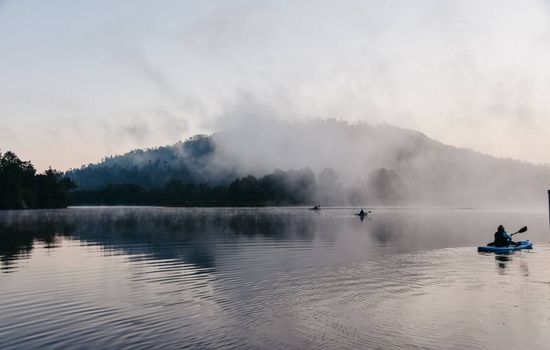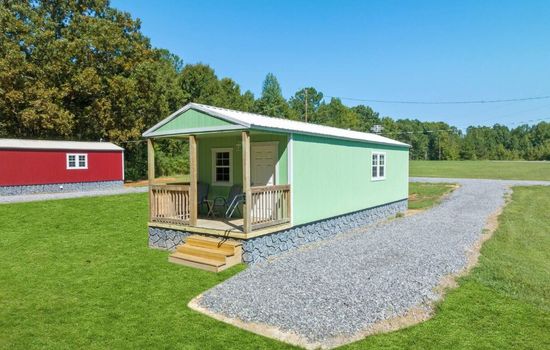The visitor center at John C. Williams Wildlife Management Area in Florida offers information on local wildlife and recreational activities. It is open from 8 AM to 5 PM, providing visitors with resources to enhance their experience in the area.
There are no entrance fees for access. Parking is available, but fees may apply depending on specific areas within the management zone.
From Orlando, take the FL-528 E for approximately 40 miles, then merge onto FL-405 N. Continue for 15 miles before turning onto FL-46 W. Follow the signs to your destination, where nature awaits just beyond the sprawling landscapes.
John C Williams Wildlife Management Area offers ample RV parking, designated motorcycle spots, accessible parking for those with disabilities, and bike racks for cyclists, ensuring convenient access for all visitors.
Accessibility & permits
Emergency
- Cell service availability:Full
Information not accurate?
Help us improve by making a suggestion.
John C Williams Wildlife Management Area in Florida offers an exquisite retreat into nature, where the tranquil beauty of the landscape captivates the senses. Spanning over 30,000 acres, this hidden gem invites outdoor enthusiasts to explore its diverse habitats, from lush wetlands to sprawling pine forests. Visitors can immerse themselves in the rich biodiversity, with opportunities for birdwatching, hiking, and photography that reveal the area’s vibrant ecosystem.
The management area is renowned for its excellent hunting and fishing opportunities, drawing sportsmen and women from across the state. As you traverse the winding trails, you may encounter a variety of wildlife, including deer, wild turkey, and an array of waterfowl, each adding to the allure of this pristine environment. The area provides a perfect backdrop for both solitude and adventure, catering to those seeking a peaceful escape or an exhilarating outdoor experience.
Whether you are an avid naturalist or simply looking to reconnect with the great outdoors, John C Williams Wildlife Management Area promises an unforgettable experience. Its unspoiled landscapes and abundant wildlife create a sanctuary that invites exploration and appreciation, making it a must-visit destination for anyone seeking the beauty of Florida’s natural heritage.
Top 3 Facts about John C Williams Wildlife Management Area
In this unique habitat, birdwatchers can witness rare migratory events, including flocks of endangered species like the Black-capped Vireo, while also encountering unusual sightings such as the elusive Eastern Box Turtle, showcasing the area’s rich biodiversity and its role as a critical refuge for wildlife.
In this unique wildlife management area, extreme temperature variations create microclimates that support diverse ecosystems, while rare storm-related phenomena, such as sudden wind shifts and localized flooding, can dramatically alter the landscape, influencing both wildlife behavior and plant growth in unexpected ways.
Known for its unique “Coyote Howl” trail, this area prohibits motorized vehicles and camping, ensuring a pristine environment for wildlife observation and birdwatching, while also hosting record-setting fishing events that attract anglers from across the region seeking to break personal bests.
Family programs
- Junior Ranger
- Ranger-led Tours
- Self-guided Tours
- Workshops & Hands-on Activities
- Living History & Cultural Demos
- Scavenger Hunts
- Night Sky & Astronomy
- Family Camping & Overnight
- Volunteer & Stewardship
- Youth Conservation
- Scouting Partnerships
- Virtual Junior Activities
- Arts & Crafts
- Water-based Adventures
Travel Tips
Plan Ahead
When visiting this stunning wildlife management area, plan ahead to maximize your experience. Research seasonal wildlife sightings and pack essentials like binoculars, water, and sunscreen. Arrive early for the best views and consider a guided tour to enhance your understanding of the diverse ecosystems. Remember to check local regulations and trail conditions to ensure a safe and enjoyable adventure.
Pack Appropriately
When packing for your trip, consider bringing a lightweight, waterproof bag to protect your gear during sudden rain showers, common in Florida’s subtropical climate. Don’t forget insect repellent and a wide-brimmed hat to shield yourself from both the sun and pesky mosquitoes, ensuring a comfortable and enjoyable exploration of the diverse wildlife and scenic trails.
Respect Wildlife
When exploring this stunning wildlife haven, keep a respectful distance from all animals. Avoid feeding them, as this disrupts their natural behaviors and diet. Bring binoculars for a closer look at the diverse bird species and other wildlife, ensuring you capture memorable moments without disturbing their habitat. Remember, your presence should enhance their experience, not intrude on their daily lives.
Stay Informed
Before your visit, stay informed by checking the weather, temperatures, and any fire bans or notices. Know the emergency contact information and ensure someone knows your destination and expected return time. Being prepared enhances your safety and enjoyment.
Seasons
Spring’s mild temperatures and vibrant wildlife make it the perfect season to explore Florida’s diverse habitats, offering unparalleled opportunities for birdwatching, hiking, and immersing oneself in nature’s beauty.
Summer’s sultry embrace transforms Florida’s wetlands into a vibrant tapestry of life, offering unparalleled opportunities for wildlife viewing, fishing, and immersive outdoor adventures.
In fall, the area offers prime hunting and fishing opportunities, with cooler temperatures and reduced humidity enhancing outdoor activities.
Winter’s mild temperatures and dry conditions make December through February ideal for exploring Florida’s diverse wildlife, offering optimal conditions for hiking, birdwatching, and fishing.
Information not accurate?
Help us improve by making a suggestion.
Where to stay
Frequently Asked Questions
Ready to dive into what John C Williams Wildlife Management Area has to offer? Let’s tackle some of the burning questions you might have as you plan your visit!
-
Hungryland WEA offers a variety of outdoor activities including hiking, birdwatching, wildlife observation, and photography. The area features numerous trails that allow visitors to explore the natural beauty of the wetlands and uplands, making it a great spot for nature enthusiasts and families alike. Additionally, fishing is permitted in designated areas, providing a chance to catch local species.
-
Yes, Hungryland WEA has camping facilities available. Visitors can find primitive camping sites that allow for a more immersive experience in nature. However, it is advisable to check for any specific regulations or reservations needed prior to your visit.
-
Wildlife enthusiasts will be delighted by the diverse fauna at Hungryland WEA. Common sightings include alligators, various bird species such as herons and egrets, and a range of mammals like deer and raccoons. This area is particularly noted for its rich birdlife, making it a prime spot for birdwatching.
-
To reach Hungryland WEA, start by taking I-95 to the Indiantown Road exit. Head west on Indiantown Road, then turn onto SW 96th Avenue, which leads directly to the entrance of the wildlife area. Be sure to follow local signage for the best routes.
-
Hunting is permitted at Hungryland WEA under specific regulations. Hunters must adhere to Florida Fish and Wildlife Conservation Commission guidelines, including obtaining the necessary licenses and permits. Seasonal hunting opportunities may vary, so it’s essential to check the latest regulations before planning your hunting trip.








